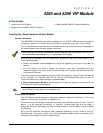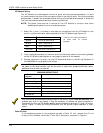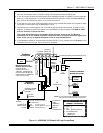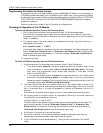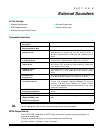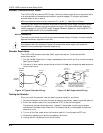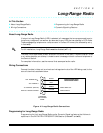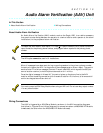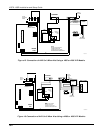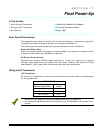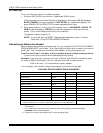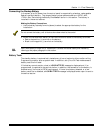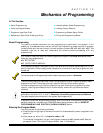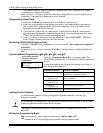
10–1
SECTION 10
Audio Alarm Verification (AAV) Unit
••••••••••••••••••••••••••••••••••••••••••••••••••
In This Section
♦
About Audio Alarm Verification
♦
Wiring Connections
••••••••••••••••••••••••••••••••••••••••••••••••••
About Audio Alarm Verification
An Audio Alarm Verification (AAV) module, such as the Eagle 1250, is an add-on accessory
that permits voice dialog between an operator at a central station and a person at the alarm
installation, for the purpose of alarm verification.
To enable the AAV feature, enter option “4” in field
✱
91 Option Selection (AAV), select Contact ID
report format for the primary phone number, and program alarm reports for the primary phone
number.
U
L
The AAV option
cannot
be used in UL installations.
After all messages have been sent during a reporting session to the primary phone number,
the control triggers the AAV if at least one of the messages was an Alarm report. The control
sends a listen-in-to-follow message (Contact ID event code 606), which signals the 685 (the
central station receiver) to hold the phone connection for 1 minute.
Once the digital message is “kissed off,” the control gives up the phone line to the AAV
module, without breaking connection with the central station. At this time, all sirens and all
continuous keypad sounds are shut off.
You must connect a 4204 Relay Module when using an AAV unit. Do not use relay output number
1 for any other function.
Wiring Connections
The AAV is triggered by a 4204 Relay Module, as shown in the AAV connection diagrams
that follow in
Figures 15
and
16
(one diagram for connections when a 4285/4286 VIP Module
is not used, the other when the 4285/4286 VIP Module is used).



